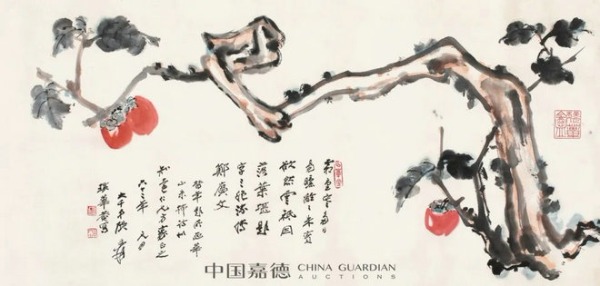

As Greece and China are preparing to celebrate their 2021 Year of Culture and Tourism with a series of events starting this spring, Greek painter Maria Giannakaki has been celebrating Sino-Greek friendship and cooperation through art in her studio in Athens every day for the past 35 years.
Her paintings are her reflections on Chinese philosophy, which she embraced as a young student in China in the 1980s. The techniques of traditional Chinese painting and calligraphy she was taught at the China Academy of Art can be seen in her work, she told Xinhua in a recent interview.
Giannakaki exemplifies how cultural exchanges help people understand each other, even if they are separated by large geographical distances. She warmly welcomes efforts to build more bridges and enhance communication between the East and the West.
Upon her graduation from the Athens School of Fine Arts in 1982, Giannakaki sought to learn different artistic techniques, and so she looked to the East. On a scholarship from the Greek Ministry of Education, she participated in a student exchange program and flew to China a year later.
After studying the Chinese language for a year in Beijing, she moved to Hangzhou in eastern China. She left the country in 1986 with a postgraduate degree after staging her first solo exhibition in Beijing.
Prior to her arrival in China, all she knew about the country she had picked up from movies.
"Basically, I had no idea. Everything was new to me. We learned to live on little money. We learned to live together. What impressed me the most, and what I loved, was that even though (Chinese) people were poor at the time, they had dignity," she recalls.
Since then, she has visited China often, the last time shortly before the outbreak of the COVID-19 pandemic. She has learned a lot about the country, the people and their art. Chinese artists have greatly influenced her work.
"I would say I am still learning. I keep, and I want to keep, first of all the materials, the Chinese rice paper and the Chinese silk fabric. I have altered the style a bit. It is more freestyle," she explains.
"I use the (Chinese) brushes, the inks, the space. I do not paint on the entire canvas, I use brush strokes. I always go back, take a glimpse and then move on. This is my pathway," she says.
"I thank my Chinese teachers so much. I am grateful to them," she adds in fluent Chinese.
Giannakaki strongly believes that dialogue between civilizations in the West and the East benefits all.
"There is fruitful dialogue. They (the Chinese) have such a large and rich cultural heritage and history that if you follow it, you will see that this source is constantly revived and enriched and there is always more to absorb. That is why they have progressed so far ahead. It is no coincidence," she says.
During her travels to China, she always tries to visit as many museums and galleries as possible to see the works of famous contemporary Chinese artists.
There are virtual seminars and tours available these days, but they are no replacement for the real experience, she comments.
"Knowing that museums and galleries are closed, I feel sapless. I think art has suffered the biggest blow during the pandemic. But art does not die. Art is life. It is a message of hope that even during these very difficult times, we find ways to disseminate art," she says.